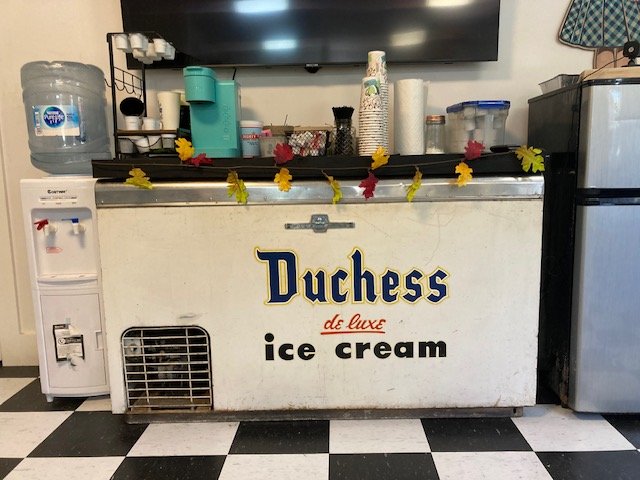“Business is Open”: Unlocking the Future of the Frias Grocery Store
Frias Grocery Store, Texas Historical Commission. [Frias Grocery], photograph, July 31, 1980 (https://texashistory.unt.edu/ark:/67531/metapth674710/m1/1/: accessed January 24, 2024), University of North Texas Libraries, The Portal to Texas History, https://texashistory.unt.edu; crediting Texas Historical Commission
BY MARY CLOSMANN KAHLE, BOARD MEMBER & ADVOCACY COMMITTEE CHAIR
Preservation Austin loves to highlight thoughtful preservation solutions, and the recent rehabilitation of East Austin’s Frias Grocery Store by an Austin resident is a great example of how to sensitively meld business, residential, and cultural goals while honoring the surrounding community. The property’s location at 1314 Holly Street, in the heart of East Austin, puts it smack in the middle of an area facing intense gentrification pressure, making its preservation in the community all the more rewarding. With the commercial side reopened as a locksmith shop, Lock Solid TX, on November 10, 2023, the live/work property once again anchors this historic community.
Frias Grocery Store, 2023, photo by Mary Closmann Kahle
The neighborhood where the Frias Grocery Store is located has a rich, complex history, which Preservation Austin honored in our recent East Austin Barrio Landmarks Project (EABLP). While much of East Austin was ethnically diverse until World War I, patterns of widespread segregation that were already established deepened in the 1920s. As noted in the EABLP, Austin’s 1928 City Plan “pushed Black families to East Austin by denying them municipal services in other areas of the city. This, along with racially restrictive covenants in other areas of the city, ultimately pushed Mexican American families east as well. This segregation was further solidified by Austin’s urban renewal and ‘slum clearance’ movements in the 1950s.” In addition, the construction of I-35 in the 1950s replaced East Avenue, a major thoroughfare in East Austin, and deepened the geographical dividing line between East and West.
East Austin has also borne the brunt of industrial zoning in Austin, whether through the 1957 Industrial Development Plan, which zoned all property in East Austin for industrial use or more recent zoning decisions that affected the area’s historic neighborhoods. In the 1990s and early 2000s, Holly Street became famous for a significant environmental justice victory, when East Austin activists forced the closure of the Holly Street Power Plant due to the environmental impacts on the nearby residents of noise pollution and chemical spills; the site is now part of a popular trail network.
Frias Grocery Store, circa 2010, credit flickr.com
It's within this context that the Frias Grocery Store, built by Frias family members, thrived for five decades. A 1985 National Register inventory describes the area’s architecture as “eclectic”, and the Frias Grocery Store perfectly fits this description. With its “L” shape, white exteriors, and jaunty green trim, the property includes a commercial space and attached residential space that were built in 1933, and a garage apartment that was added around 1946. There were also several add-ons on the 1950s that were most likely done with found materials. The Frias family lived in the property throughout the years, and the business side opened as the Frias Grocery Store in 1951.
The move was prophetic because the Frias Grocery Store ultimately became associated with one family member in particular, Beatrice Frias (1928-2020). Beatrice turned out to be ideal for running the business, for from an early age she was an academic star and all-around model citizen. Early Austin American-Statesman records show that she was on the Palm School Honor Roll in 1936, was selected as a school “banker” for her arithmetic skills in 1938, and excelled in a math contest at Allan Junior High in 1943. She was also recognized for having perfect school attendance, serving as a P.E. “captain,” and playing the piano and accordion. She earned a business degree from the University of Texas, further cementing the skills she needed to help run the store until her retirement in 2001.
Beatrice Frias (farthest to the left), 1954, Austin American-Statesman
Because of this long history, the importance to the neighborhood of the property’s 2019-2022 renovation can’t be overstated. The owners of Lock Solid TX, longtime Austinites Jerry and Adriana Lopez, have family members who have lived in East Austin for generations. (Jerry was hired by the current property owner to rekey some of the locks on the structures during the renovation, and he and Adriana ultimately came on board as tenants in the commercial space in keeping with the property’s history as a retail establishment.)
Duchess ice cream box from the original Frias Grocery, 2023, photo by Mary Closmann Kahle
Jerry said, “I think a lot of the kids that went to school around here or were from this neighborhood came here, because this was probably their closest grocery store in the area, so they were coming here buying their stuff after school or whatever. I mean, they had their own ice cream machine, so they were coming in, getting ice cream, and all that good stuff.” He added that, when customers or neighbors enter the business, it’s “just like Memory Lane…It’s like they remember the people that were in here.” The neighborhood also appreciates that the renovation is true to the structures’ original shape and color scheme.
Said Adriana, “What I love most about being here…is that [the owner who rehabilitated the property] keeps things as much original as possible, and even the people who only lived here a couple of years and known this location, they appreciate that…and they still feel that bond with this building as much as somebody who’s been in Austin and lived here their entire life.”
One of the funnier stories from the grocery’s past involves another employee of the store. As Jerry’s mother told him, “there was a gentleman that would be at the cash register and he would be like he was asleep, and he would let you go get all your stuff and then you go back to the counter and you had to write down what you got and put your money there, and they were like…they thought that was so cool, but you could hear him ringing it up right after you left, so the whole time he was keeping an eye on you.”
Decorative eaves on Frias Grocery Store, 2023, photo by Mary Closmann Kahle
The rehabilitation of the property posed both predictable challenges and unexpected rewards. When the current owner bought it, the property was a “time capsule” from when Beatrice stopped running the store in 2001. The foundation required some work, parts of the property lacked insulation, and some of the wood was in poor condition. Replacing some of the exterior siding was challenging, but the owner’s team was thrilled to find salvaged wood that maintained the historic integrity of the structure. The owner also enjoyed finding and repairing the small decorative eaves on the sides of the main structure’s roof. A large fan that once stood between the commercial and residential portions of the main structure is echoed today in a colorful mural on the structure’s south wall, painted by local artist Jenny Heissenhuber. The mural stands as a testament to the labor of love that the Frias Grocery Store renovation, and its long history, represent.
When asked what Jerry and Adriana want people to know, they said, “We’re here! We just want people to know we’re here.” Or, as the property owner said, “Business is open.”






